#Gardening free resources
Text
How to create a summer garden that attracts pollinators
Are you wondering how to create a summer garden that attracts pollinators? 🌻🐝 Check out our infographic with simple steps to get started! Save it, share it, and use it to transform your garden into a pollinator paradise.

Looking for more resources on gardening? Head over to www.yardener.com and browse our collection of resources. We update regularly, so be sure to save our website for future reference. We offer a variety of content, including infographics, articles, and tips to help you create a thriving garden ecosystem. Check it out today!
#Attract Pollinators#Summer garden#Attracting bees#Sustainable gardening#Flowering plants#Habitat restoration#Garden design#Butterfly garden#Hummingbirds#Insect-friendly#Organic gardening#Plant diversity#Ecosystem health#Perennials#gardening free resources#gardening resources#gardening information’s#gardening informative website#gardening free care guide#gardening everything
4 notes
·
View notes
Text
Adding To or Starting a Garden
AKA, the beginning of the Plants-Related section of this series.
This is my third post in a series I’ll be making on how to increase biodiversity on a budget! I’m not an expert--just an enthusiast--but I hope something you find here helps!
Got an area of lawn you’d like to convert to a wildlife haven? An area you can stick some hanging baskets in? Want to know how your garden of tomatoes and zucchinis is already putting in a lot of work? This is the section for you!
It would be dumb of me to not acknowledge that the act of gardening can come with a lot of costs. Buying seeds, buying plants, buying soil, raised bed materials, mulch, etc. … it can all get a bit daunting, let’s be honest! But there’s quite a few ways to get seeds and plants for free or extremely cheap, which I’ll be addressing in this section! The next section will be all about addressing the other Costs in gardening and how to mitigate or eliminate them entirely.
Also, do keep in mind; there’s no need to try and convert a whole area from lawn to garden or unused to garden at once. In fact, it could actually be extremely beneficial to do it a little at a time--maybe four or five square feet to start out.
Front Lawn (or Managing Principles)
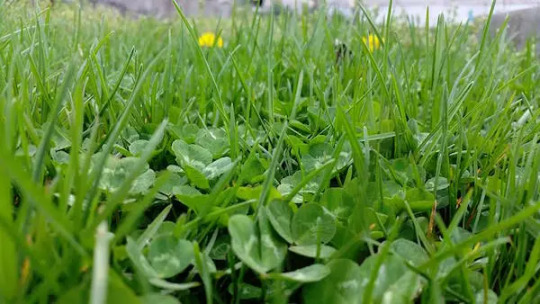
If you live in a place where you’re required to have a grass turf lawn (HOA’s come to mind…), try replacing it with native grasses instead! You could even possibly use a low-growing ground cover plant like clover to a similar effect! Reseeding/replacing an entire lawn can be a big upfront cost, but even just letting the lawn be a little messy and tall helps. If the lawn gets patchy, leave the bare spots for a little while and something different will likely pop up! Pioneer species will fill the gaps and provide benefits to other plants around them, support animals, and more! If you want to take the guesswork out of it, you could always research what the pioneer species are in your area and plant the ones you like most.
Obtaining Seeds for Cheap or Free
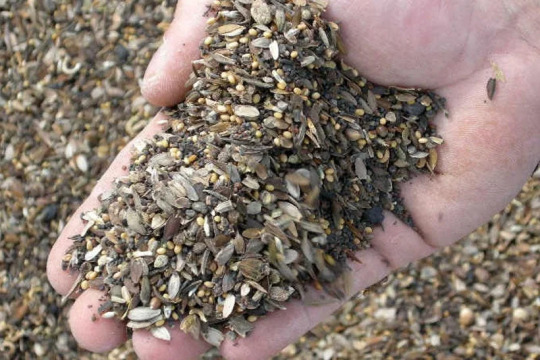
The cheapest way to start a garden is by far via seeds. However, seeds can be a bit complicated to grow, and some sources make them… way overpriced. Fortunately there are ways to get seeds for little to no cost!
Some places sell seeds for as low as a dollar, 50 cents, or 25 cents! The packets may not have a lot of seeds, but it’s definitely a good start for a low budget! I’ve personally bought cheap seed packets at Walmart--the Ferry-Morse and Burpee brands are not what we’re looking for here. Typically the cheaper ones I’ve found are American Seed (which is owned by Green Garden Products, which also owns Ferry-Morse, Livingston Seed, McKenzie Seed, and Seeds of Change. Do with that information what you will), but they’re rarely stocked near the Ferry-Morse ones in the Formal Gardening Section. I’ve most often found them on end caps near the gardening section, so you may have to weave through a few aisles to find them, but once you do there’s an array of flower and vegetable seeds to select from! Alternatively, I’ve found seeds at Dollar Tree sold 2 or 4 for a dollar in Spring as part of their seasonal product; however, when they’re out of stock, they’re typically out of stock for the year. Try to check them out early in the year!
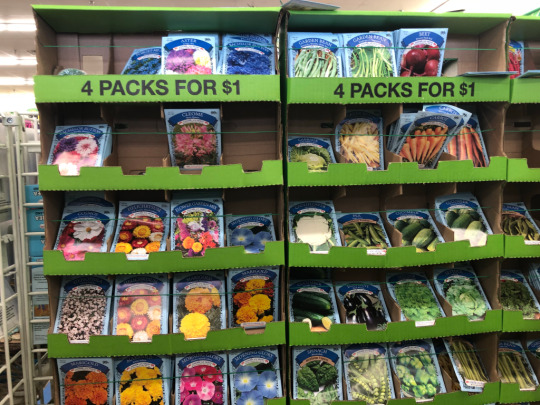
Otherwise, other seed companies like Urban Farmer or Botanical Interests will often have semi-frequent sales in spring and fall, when people are stocking up on seeds--joining their email lists can help you be the first to know when a good sale is going on!
Some foods from grocery stores will provide seeds that you can use in the garden as well. I’ve had the most luck with store-bought bagged beans, peppers, and tomatoes. Some people have had luck with watermelons, apples, citrus, squash, and more. Do keep in mind that you likely won’t get the same variety of fruit/vegetable as the one you bought--the resulting plant may look different and taste different.
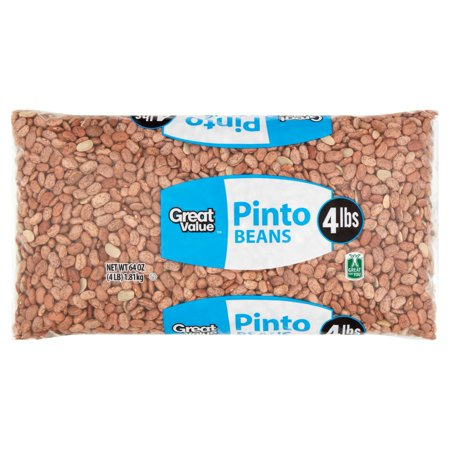
Give it a shot! Pick some beans you like--if they don't grow well, at least you can eat the rest!
If you live in the US, food-producing live plants, bare roots, and seeds can often be purchased with SNAP benefits. But what does growing fruits, veggies, and herbs have to do with boosting biodiversity? While food crops aren’t typically native, they still provide valuable shelter for native insects. Some plants even have intricate relationships with native fauna--like the squash bee, a solitary bee which exclusively pollinates cucurbits like pumpkins, squash, and zucchini. And we get to benefit more directly as well! If you’re planting a diverse range of foods in your garden (as opposed to the swaths of single-plant farms that typically produce what’s sent to grocery stores), you’re supporting high levels of biodiversity by providing a variety of plants for creatures to live and hunt around.
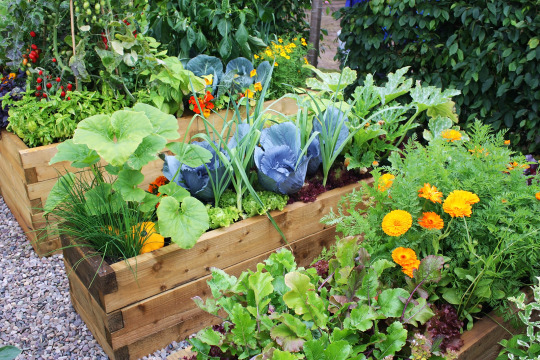
Most of the time, when we think of boosting biodiversity with a garden, we think of a colorful flower garden teeming with pollinator species. However, if we’re striving to use native species, it can be a bit difficult to find some species in stores. I can say from experience that trying to find any wildflower seeds other than butterfly weed, purple coneflowers, and black-eyed-susans is… challenging, if you limit yourself to stores like Walmart, Home Depot, and Lowe’s. You might occasionally get lucky with an ACE Hardware or a local nursery, but even then sometimes it can be hard to track down who in your area is selling what--let alone if you live in an area where no one really is selling native plants or their seeds. Not to mention, even once you find a local or online store selling the seeds you want, they can sometimes cost a pretty penny. So what do you do?
If you have the option to, consider gathering native seeds yourself! Get good at identifying the native flora and fauna--or at least, a few target plants and their lookalikes--and get ready to go! Learn where they tend to grow, when they’ll be seeding, etc. Try to identify the plant before it goes to seed (for most plants, it's easiest to identify when flowering), then check back regularly to gather seeds. Typically, if I want to learn how to collect seed from a specific plant, I just search it on Google or YouTube--oftentimes, I'm lead to the GrowItBuildIt Youtube page, so it may be a helpful resource for you as well! Of course, make sure to leave plenty of seed behind so the wild population can repopulate, and seed can feed other creatures in the area. A good rule of thumb is to take no more than 1/3rd of what's available.

Buying seed in bulk is an option if you can afford the upfront cost. Try teaming up with a few friends to buy some bulk seeds and split them amongst yourselves--you’ll get tons of seed! Prairie Moon is a popular site that'll sell seeds by the pound if you can afford the price--though they're in the US, and I believe they focus on Midwest and East Coast natives.
If you want to cheat the system, don’t buy bulk sunflower seeds--buy bags of sunflower seeds being sold as birdseed. They’re typically all black oil sunflower seeds, but they’ll sprout, and they’re fairly cheap for the amount you get!
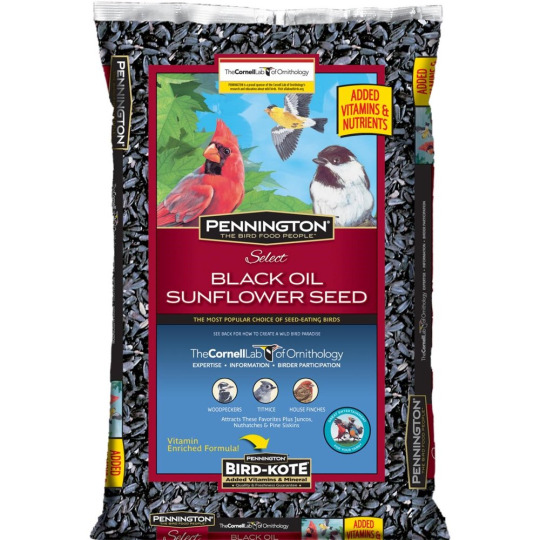
However, beware generic wildflower seed mixes! Many brands like to sell wildflower seed mixes in big box stores like Home Depot, Target, or even Dollar Tree, but they’ll often include flowers that aren’t native or possibly even invasive in your region! Before you make any purchases, double check to make sure the contained seeds won’t do more harm than good! A quality source of native seeds will provide English and Latin names for all seeds included, and will be native to the region or at least non-invasive.

See this? I don't trust this.
There’s a good handful of programs online that’ll send you free seeds if you’re planning to start a native habitat project! Poke around online and see what you can find; you might get lucky! The best time to start looking for these is fall and winter, I find--by early spring, many of them are either done or beginning to wind down... though some also start up in spring. Ultimately--just check regularly! You never know what you can find!
Other Ways to Get Plants
Don’t want to start from seed? That’s fair! You can try cuttings! Just be sure not to take too much of the plant while you do so. Make sure you’ve gotten a few leaf nodes on your cutting, and cut any flowers you may have gotten. Make sure to leave some blooms and foliage on the original plant for the creatures in the current habitat--you don’t want to destroy one habitat to make another in your garden. There’s tons of methods of rooting cuttings, many of which have different efficacy rates for different plants, but that’s a topic for another post.
If you find seedlings growing in a place where they won’t be able to sustain themselves long-term, or are in danger of being destroyed, consider relocating them! You may be able to gently dig up and transplant the seedling to your garden. Don’t do this if they’re in a place where they can easily survive--ideally, you’ll be taking plants from sidewalk cracks, heavily maintained public gardens, roadsides, etc. Do be careful while doing this--ensure your safety first!

You’re totally allowed to join gardening communities like clubs, facebook groups, and more before you’ve even put a trowel to the dirt. These are great places to learn information and advice! Many gardeners are more than happy to help out a new gardener, and will eagerly provide seeds, cuttings, or even baby plants! Talk to some people about your gardening journey and what you’re hoping to do, and you just might find some kindred spirits--or at least get more people interested in the topic!
Seed and plant giveaways and trades happen all the time in gardening clubs, as well as online! Just poke around and see what you can find! Some are explicitly trades, meaning you’re expected to send something in return, but once you get your feet on the ground with some plant knowledge you’ll be stellar! You may be able to explain you’re just starting out, and someone may send you seeds without expecting a trade, but I’d suggest trying giveaways first.

Poke around online and see if there’s a local chapter of your state’s native plant society. From there, you’ll likely be able to find a calendar of events--many of them will host plant sales in the spring, with a bunch of native plant seedlings ripe for the pickings if you can make it out and have some money to spare! Fair warning, though, you’ll want to get there early if you can. If they say they’re starting at 10, try to get there by 9:45. Year after year, there’s always record turnout, and they sell out of plants faster than ever. Just trust me on this. I’ve been let down; hopefully you won’t have to be.
Some libraries are beginning to host seed libraries! Check around and see if your library has one! Ideally, the system works best if you also have seeds to contribute in return, but if you’re just starting out I’m sure they won’t mind you taking some seeds! Just consider saving some seeds to contribute in the future and pay it forward. If your library doesn’t have a seed library? Consider asking if they’d be willing to start one! Community interest is a great way to get the ball rolling on projects like these, but they’ll only know the community is interested if the community tells them they’re interested!
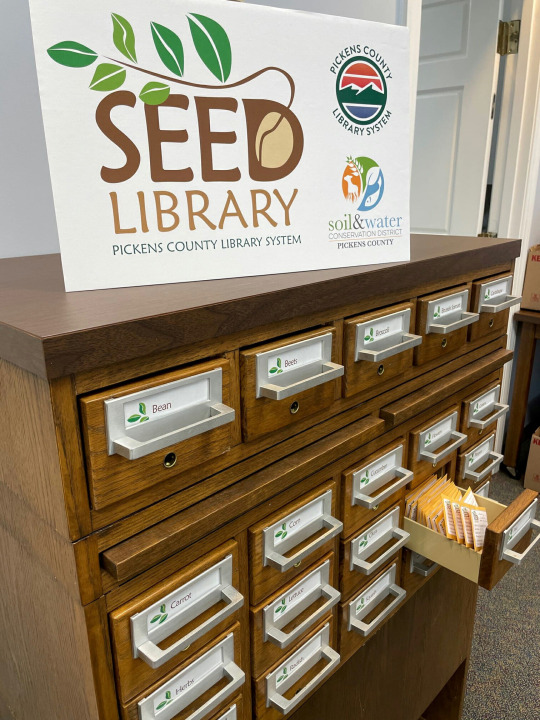
Volunteer to Garden for/with Someone Else
Maybe someone in your area wants to garden, but is struggling to find the time/energy. Many elderly people who used to garden simply can’t anymore but still would like a garden. Other people may love to have a helping hand in their garden. You might even find a few people in your area interested in renting and sharing a community garden plot with others, so they don't have to handle it all on their own! They may be interested in increasing biodiversity right now, or may be willing to if it’s brought up to them. You might be just the kind of person someone needs! Since it won't be your garden, you’ll likely need a bit of permission and collaboration to get anything in particular going, but it’s worth a shot and a way to maybe even make friends!
Again, your mileage may vary with some of these. You may not know where there's a bunch of wildflowers growing in your area, or maybe your local library doesn't have a free seed library. That's okay! Do what you're able to, find what you can find, get what you can get! And there's never any shame with starting small--in fact, starting small can make the project easier to manage and expand when you're able!
That's the end of this post! My next post is gonna be about ways to start growing plants cheaply--low cost seed starting set ups, essentially. There's a lot of good options, many of which I've used myself even! Until then, I hope this advice is helpful! Feel free to reply with any questions, success stories, or anything you think I may have forgotten to add in!
#biodiversity#solarpunk#gardening#outdoor gardening#growing from seed#ani rambles#out of queue#the biodiversity saga#i will be honest I have never flat out approached people to offer to help them garden#HOWEVER. People HAVE approached ME asking ME to help THEM with/plan THEIR garden#granted it was after I'd been gardening for a good few years. and its mostly family or family friends but yknow#people would be like 'oh wanna help me with my veggie garden?' even before I tried growing vegetables#i don't think the library near me has a seed library but you just wait until i. get the courage. to go to the library regularly.#i've seen people also make their own little seed library structures kinda like a little free library but like#i dont think my neighborhood is about that life.#if any of yall have those though it could be a great resource! also send pics because I love seeing them#not to say that this post should become a giant seed trade but if it did become that i would be the opposite of mad#if there's any typos blame my sister shes got the hotel room at like 60-something degrees and I am FREEZING#welp time to shut up now bye
1K notes
·
View notes
Text

One of my neighbours came over today. She's not a gardener but knows I am. She said she now has a home coffee machine and it generates coffee ground waste. This picture is a week's worth. She wanted to know if I would like the grounds for my garden.
So I will now have my own regular little supply of coffee grounds. Yay!
#gardeners on tumblr#garden#vegetables#gardening#self sufficiency#home grown#plants#minimal waste#zero waste#coffee grounds#neighbour#free resources#sharing
8 notes
·
View notes
Note
how much fire is in the gay firefighter show. follow up question is it easy to look away from the fire in the gay firefighter show. these questions are in no way related to my desire to potentially watch the gay firefighter show.
there’s a fair amount of fire in the gay firefighter show - as well as general medical emergencies, gore, other bodily functions, dangerous situations, domestic violence/abuse, depictions of disorders including schizoaffective disorders, severe anxiety, depression, ptsd, addiction, etc; and a whole heap of trauma (how is it possible to give relatively few characters so much trauma? i have no earthly idea).
as for looking away - this doc
has been passed around as a good list of upsetting subjects by episode. i also know people who use doesthedogdie.com to search for their questions/triggers: here is their page for 9-1-1. https://www.doesthedogdie.com/media/20736?index1=-1&index2=1
All this being said, I’m not sure how many warnings you’ll be able to find for the actual calls in each episode (aka which types of accident/disaster/conflict come into play) but looking at episode lists and synopses should help, and many people in the fandom (including me) are happy to give episode summaries if an episode looks or proves to be unwatchable!
The show is often quite lighthearted and even comedic in spite of all its difficult topics. i think you’d enjoy it especially if you’re cool with stuff like House M.D!
#notes from the herb garden#asks#9-1-1#911#911 abc#if anyone has more resources or suggestions feel free to chime in!
4 notes
·
View notes
Text
Something that I have noticed is I know almost nobody my age that goes to a food pantry. I know people who regularly run out of money for food and in general have to eat an unsuitable diet because that’s what they can afford and they still don’t go to a food bank, im not sure if it’s because they’re embarrassed or maybe if you didn’t grow up going you don’t know much about it but if you’re financially struggling I really recommend it. And look into other options for food assistance too like community fridges and gardens and other programs that can assist you, where I live Salvation Army pays for an allotted amount of grocery delivery for low income people every month, in the summer farmers take excess produce to the library to be taken by anyone who needs it, etc. There are a LOT of resources for free food that you can look into especially if you are literally not eating because of your financial situation
#also I know some people express concern over taking up resources other people need but 1. you need it too#and 2. I regularly get given extra because they’re concerned that it’ll go bad because not enough people took everything
24K notes
·
View notes
Note
Wait, which animals raise livestock?
Several species of ants will 'herd' aphids around (a type of plant lice)- even picking them up and putting them back with the group if they wander off. The ants will attack anything that approaches their aphid herds, defending them. The aphids produce a sugary excretion called honeydew, which the ants harvest and eat.
Some ants will even 'milk' the aphids, stroking the aphids with their antennae, to stimulate them to release honeydew. Some aphids have become 'domesticated' by the ants, and depend entirely on their caretaker ants to milk them.
When the host plant is depleted of resources and dies, the ants will pick up their herd of aphids and carry them to a new plant to feed on - a new 'pasture' if you will.
Some ants continue to care for aphids overwinter, when otherwise they'd die. The ants carry aphid eggs into their own nests, and will even go out of their way to destroy the eggs of aphid-predators, like ladybugs.
--
Microhylids – or narrow-mouthed frogs - have an interesting symbiosis with Tarantulas.
While the spiders could very easily kill and eat the much-tinier frogs, and DO normally prey on small frogs, young spiders instead will use their mouthparts to pick up the microhylid frogs, bring them back to their burrow, and release them unharmed.
The frog benefits from hanging out in/around the burrow of the tarantula, because the tarantula can scare away or eat predators that normally prey on tiny frogs, like snakes, geckos, and mantids. The tarantula gets a babysitter.
Microhylid frogs specialize in eating ants, and ants are one of the major predators of spider eggs. By eating ants, the frogs protect the spider's eggs. The frogs can also lay their eggs in the burrow, and won't be eaten by the spider.
So it's less 'livestock' and more like a housepet - a dog or a cat. You stop coyotes/eagles from hurting your little dog/cat, and in return the dog/cat keeps rats away from your baby.
--
Damselfish grow algae on rocks and corals. They defend these gardens ferociously, and will attack anything that comes too close - even humans. They spend much of their time weeding the gardens, removing unwanted algaes that might overtake their crop.
The species of algae that they cultivate is weak and and sensitive to growing conditions, and can easily be overgrazed by other herbivores. That particular algae tends to grow poorly in areas where damselfish aren't around to protect and farm it.
Damselfish will ALSO actively protect Mysidium integrum (little shrimp-like crustacians) in their reef farms, despite eating other similarly sized invertebrates. The mysids are filter feeders, who feed on zooplankton and free-floating algae, and their waste fertilizes the algae farms. Many types of zooplankton can feed on the algae crop, and the mysids prevent that.
While Mysids can be found around the world, the only place you'll find swarms of Musidium integrum is on the algae farms that Damselfish cultivate.
Damselfish treat the little mysids like some homesteaders treat ducks. Ducks eat snails and other insect pests on our crops, and their poop fertilizes the land. The ducks can be eaten, but aren't often, since they're more useful for their services than their meat.
--
There are SEVERAL species of insect and animal which actively farm. They perform fungiculture and horticulture: deliberately growing and harvesting fungus and plants at a large-scale to feed their population.
Leaf-cutter ants and Termites both chew up plant material and then seed it with a specific type of fungus. The fungus grows, and the termites/ants harvest the mushroom as a food source.
Ambrosia beetles burrow into decaying trees, hollow out little farming rooms, and introduce a specific fungii (the ambrosia fungi), which both adults and larval beetles feed on.
Marsh Periwinkles (a type of snail) cultivates fungus on cordgrass. They wound the plant with their scraping tongue, then defecate into the wound so their preferred fungus will infect it and grow there. They let the fungus grow in the wound a bit, and come back later to eat.
8K notes
·
View notes
Text
local library had an adult crafting event once a month so I thought it would be fun to go to get out, do things, and see people! All supplies included so u just show up and create. It was super fun, loved the shadowbox thing I made and met like 7 women over 75 years old because that's who also goes to library crafting events.
anyways here's the box the theme was "dream" and I was running out of time to cut things out of magazines and my fingers were covered in glue

#every day i think about libraries and how great they are with so many resources available#free access to newspapers online that are usually behind a payeall? yep#free seeds u can use to plant a lil garden? yes!#the craft was fun too teehee#also it was so hard to find things in magazines to cut out that were small enough for this tiny ass box. i think i want to do more collaging
1 note
·
View note
Note
Hiii I wanted to say I love yours works and was wondering how sukuna would react to yuuji wanting us to be his valentines 💓💓💓
Yuuji knows what chocolates you do and do not like. . . Actually, he didn’t. Sukuna did, however. And — being the awesomest brother he was — told Yuuji, albeit not for free. The boy had to earn it (Sukuna’s words) by mopping the floors of the apartment. Why did Sukuna choose such an odd way of payment? Who knows. And then, of course, Sukuna had to accompany Yuuji to the store in order to purchase said chocolates.
Yuuji isn’t sure what flowers you do and do not like. But he didn’t care; he thought all flowers were beautiful no matter what color, shape, size, and that each flower was pretty and unique in its own way. That’s what he repeated to himself in his head as he picked flowers straight from the dirt in the gardens outside your apartment complex.
Yuuji sees you wear some colors more than others. So he assumes you like those best. That’s what he thinks to himself as he colors in a card for you using those exact colors with his crayons. And though they weren’t a carbon copy — since he was working with very limited resources — his brain didn’t notice. And neither did you, when you received the card.
Yuuji loves you, a lot. He loves you a lot. Yuuji loved how caring you were when he got a boo-boo. Yuuji loved how good your cooking tasted compared to everyone else's. Yuuji loved how you would sing him to sleep — he, like his brother, thought your voice was amazingly lovely. Yuuji loved how funny you were, the jokes you would tell to cheer him up, and they worked. They always worked. Yuuji loved how soft your hands were when brushing through his unruly pink locks, much like his brother. Yuuji loved how you showered him with your undivided attention.
Yuuji was a smart kid . . . sometimes. He saw the way his brother changed when you started coming over to the apartment more and more often. Even when he was very little, he noticed. He noticed that after you permanently moved into the apartment, Sukuna was softer towards him. Sukuna smiled more. Sukuna laughed more. Sukuna loved more.
And so, Yuuji loved you a lot. Because, most importantly, he loved how you changed Sukuna — for the better.
Unfortunately, and like most kids, one thing he didn’t love was . . . school.
School, a center for learning to some and a prison to most. But if he didn’t go to school, how would he learn what Valentine’s Day was? How would he know that Valentine’s Day was a holiday to celebrate love, friendship, and admiration, for those you call special? He wouldn’t. Yeah, in a nutshell, long story short, however you want to call it, Yuuji wouldn’t know. He wouldn’t know what Valentine’s Day was. But, without you, he wouldn’t even know what love was — save for his brother, [occasionally], of course.
And what did Sukuna do? — Since he loved Yuuji so much? He fixed the little kiddo a tie and suit, of course! Yuuji looked utterly dashing wearing Sukuna’s suit; the pants were dragging a bazillion feet behind the boy and the tie was completely off-centered. (Were you expecting a suit tailored and sized for a little boy? LOL.) Maybe Sukuna did that on purpose. Maybe not. Sukuna did happen to snap a picture, though. Oh, he was so going to use this as blackmail once Yuuji grew older.
Yuuji thought he had finally obtained the confidence and big muscles of a man when he grew the courage to sit you down on the couch so he could “talk” to you. But as soon as he saw you looking attentively at him with the most gorgeous eyes he had ever seen in his whole four years on this planet, he nearly experienced heart palpitations right then and there.
Coming to the rescue, Sukuna came over and patted his younger brother on the back. Nodding at him in reassurance.
You had to admit, Yuuji looked absolutely adorable whilst he stuttered over big, complicated words not fit for a mere child, but when he finally got it, he shoved the chocolates, flowers, and card into your hands.
“And—and, I wan’ to ask you to be my va . . . wen . . . tine. . . Vawentine!” It took him a few tries to remember the “correct” pronunciation and to sound out the word syllable by syllable, but what mattered most was that he got it — in the end.
Yuuji raised his arms into the air, for some odd reason, like a person cheering or celebrating. Speaking of which — in this case, he would be celebrating his finally having gotten the hang of saying the word ‘valentine’. But he just looked so precious that you couldn’t even find the heart to tease him about it. Not even a little bit.
And if you were paying a little more attention to your surroundings, you would see that Sukuna was in the corner of the room, slowly and silently moving his lips as in a way to help Yuuji sound out the tough word.
“Thank you, Yuuji! — For all the gifts.” You scooped him up into your arms, peppering kisses all over his face. “I love you so, so much! Of course I’ll be your valentine. You are just too cute, aren’t ya?” You pinched his chubby cheek, eliciting a squeal from the boy. “Such an adorable little baby. I just want to put you in my pocket and take you everywhere with me.”
Yuuji nodded fervently, although he didn’t understand a thing you had just said.
All the while, Sukuna crossed his arms over his chest, huffing, before facing away from you two.
“Aww, are you mad that you're not my baby?” You turned your attention towards your boyfriend — who continued sulking — and so did his little brother, still snuggled in your arms.
“What the fu—what the heck? No.”
“That you’re not my honey bun?”
“Stop.”
“That you’re not my sweetie poo?”
“Oh my God.”
“That you’re not my—”
He cut you off, turning around and swiftly slapping a hand over your mouth so fast you didn’t even see it coming. But, what you were able to do was: lick a stripe up his hand covering your mouth.
“Eugh! You just always have to ruin my day, don’t you?” Sukuna grimaced, pulling back and wiping his wet hand on his hoodie. You let out a cheeky laugh in reply.
“I think that someone . . . is a little jealous. Don’t you agree, Yuuji?”
He nodded. “Mhm!”
“I am not jealous, matter of fact. You all are just stupid.”
“Stupid?” You raised a brow, wanting to see where Sukuna was going with this.
“Yeah. Valentine’s Day is for couples. Couples. Not friends. Not . . . not anyone else. So, Yuuji can’t be your valentine.” He smirked at the now frowning boy in your arms. “Sucks to suck.”
“We are a couple. A couple of fwends.” Yuuji nodded profusely.
“Doesn’t count.”
“Yuh huh!”
“Nuh uh.” Sukuna stuck out his tongue jokingly at his younger brother.
“My teacher told me that—that Valentine’s Day is for friends, too. She said it is also a day for fwendship.”
“Well, your teacher is stupid.”
Yuuji clawed at your arms, trying to escape in order to jump out at his brother. He was mad. Big mad.
“Yuuji, no. No fighting.”
“That’s right. Listen to your friend, Yuuji. Listen to your friend, who’s not your valentine.”
At this, Yuuji flew out of your arms and lunged at his brother, tackling him onto his back on the couch.
-
Moving on, it’s safe to say that the next day at school, Yuuji told all of his classmates that his valentine was an angel.
Taglist: @beyond-your-stars @sad-darksoul @mochimoee @r0ckst4rjk @lillycore @deepchromatose @yinyinyinyinyinyin @fivehoneyharg @desihopelessromantic @taiyakii @hannas16 @acroso @msvalsius @call-memissbrightside
846 notes
·
View notes
Text

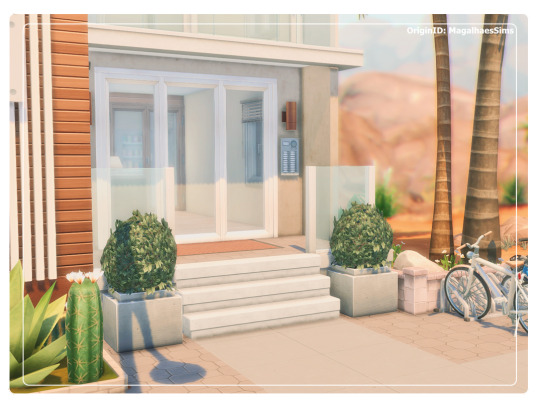

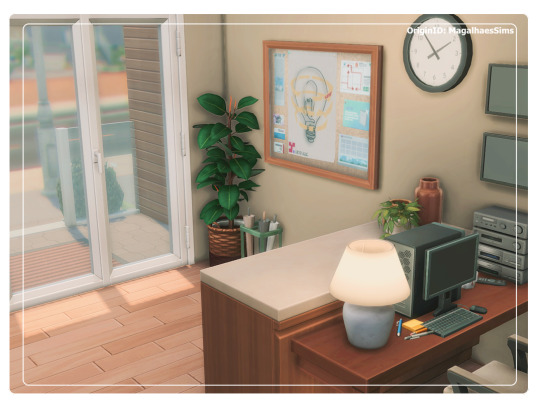

AGAVE APARTMENT - MAXIS-MATCH CC BUILD
I'm finally sharing an apartment! I chose to build in Oasis Springs and opted for the smallest lot available. There are three units in total, but I've only fully decorated one. I designed it with Johnny Zest in mind. Also, I really wanted to use these two new, coolest sets: Neighborly and Cheap&Chipped by @syboubou. I really loved all the items — especially the empty toilet paper roll; it's my new favorite! LOL.
Additionally, due to some glitches in my game following the For Rent patch, I've labeled this build as "Residential" to avoid any potential issues with saving files. If you encounter any problems, please don't hesitate to let me know! If you want to check out the construction progress, watch the YouTube video linked below.
NOT CC FREE
Lot Type: Residential | Rental
Size: 20x15
World: Oasis Springs
Enable bb.moveobjects before placing in your game!
📺 WATCH THE SPEED BUILD HERE ✨
Origin ID: MagalhaesSims (remember to enable custom content on!)
DOWNLOAD
CC USED IN THIS BUILD:
NOTE: For convenience, some of the CC is included in the Download Folder. Please put it in your Mods Folder along with the CC linked below.
AwingedLlama: Nostalgia Living || Charly Pancakes: Chalk Kitchen (Clutter) | Munch | Soak | The Lighthouse || TheClutterCat: Busy Bee | Cozy Casita | Dandy Diary | Flower Power (Vinyl) | Hello Horse (Trophy) | Mellow Moods (Essential Oils Tray) || Felixandre: Colonial | Kyoto (Arch) | Soho || Harrie: Klean | Octave Collection | Shop The Look V2 | Spoons (Pizza Tray) | Stockholm || House Of Harlix: Baysic Bathroom | Baysic Set | Livin'Rum | The Kichen (Plant) | Tiny Twavellers (Wall) || KKB-MM: Citrus Room | My Heimish Hall || LittleDica: Delicato Living | Greasy Goods | Lava Lamp | Sleek Slumber || Max20: Classic Kitchen | Garden At Home | Master Bedroom | Poolside Lounge (Plant) || MyshunoSun: Gale Dining | Lottie Bedroom | Simmify | Sona Dining || Peacemaker-ic: Hinterland Kitchen (Honey Pot) | Hudson Bathroom (Towel Holder) | Tasteful Tots (Clutter) || Pierisim: Auntie Vera | Calderone Living | Coldbrew | Combles | David Apartment | Domaine Du Clos | MCM House Set | Oak House Set | Pantry Party | The Office | Tilable Kitchen | Unfold | Woodland Ranch || Simkoos: Clutter Dump || Sixam-CC: Art Studio | Cozy Family Livingroom | Home Improvement || SurelySims: Office Spaces (Clutter)
The CC Sets above are the main ones I used to decorate this specific building and you can find all the links to the creators’ sites on my Resource Page. However, if you can’t find something specific, you can send me a WCIF and I’ll try to help you find it!

My content will always be free and right away available to everyone, but if you want to, you can show your support through my Ko-Fi Page. Your donation will always be much appreciated!
Thank you for reblogging: @maxismatchccworld @mmoutfitters @mmfinds @s4realtor @coffee-houses-finds and everyone else for helping me boost this post!
#the sims 4#ts4 maxis match#ts4 build#ts4 cc build#ts4 speed build#ts4 oasis springs#ts4 apartment#ts4 rental#ts4 for rent#build#download
1K notes
·
View notes
Text
genuine piece of advice for punks, activists, and everyone else honestly: any form of leftist infighting is a waste of your time.
focus on the task at hand: improving living and quality of life conditions for your community. unionize. donate to food banks. cooperate with organizations like food not bombs to distribute free hot meals. volunteer at libraries. participate in homeless outreach. give people access to resources in your community. organize and participate in protests. create organizations, groups, and gathering spots for queer folk in your area who need safe places to go and find community.
help people find access to HRT, surgery and other gender affirming care. carry, hand out, and administer narcan (naloxone). help recovering people get to rehabilitation, methadone clinics and so on. help addicted people practice harm reduction and use safely. help give out menstrual kits to homeless and low income people who have periods. help people get into housing programs. help disabled people apply for disability (SSI and SSDI) and disability lawyers. help disabled people find work or income resources that are accessible to them. donate blood and/or plasma if you can. care for people with HIV and AIDS.
help people apply for food stamps, medicaid, bill and rent assistance. help disabled people find case managers and caregivers. call local lawmakers to voice your opinions on current events. advocate for disadvantaged queers in your area. establish and participate in mutual aid funds. spread awareness and advocate online. write about and share your experiences with disadvantages, abuse and other problems you've faced in life for who you are. gather and organize with people with shared experiences. start or volunteer at a community garden. deliver meals to the elderly. volunteer at a homeless shelter.
organize fundraisers for, spread awareness of, and donate to:
Palestine
Sudan
Congo
i don't care if someone's activism looks different from yours: there are a TON of ways to improve and make change in your and the global community. doing ONE of these is enough, finding a singular way to improve your community is a better use of your time than arguing. everyone can find ways to be good to each other.
rehashing the same talking points, reading between the lines, accusing someone of identifying with politics they've never advocated for, and making baseless accusations isn't helping. it's not fixing anything. mobilize. advocate. stand up for your community and its rights. take action. now. i mean it. we must.
help each other.
658 notes
·
View notes
Text
The Ultimate Vertical Gardening Checklist 7 Must Know Tips Presentation
Learn the 7 must-know tips for successful vertical gardening, including the definition and benefits, types of vertical gardens, choosing plants, tools and materials, building your vertical garden, common problems and solutions, and creative ideas. Start your own vertical garden today and enjoy the benefits of growing your own plants in a space-efficient and beautiful way.
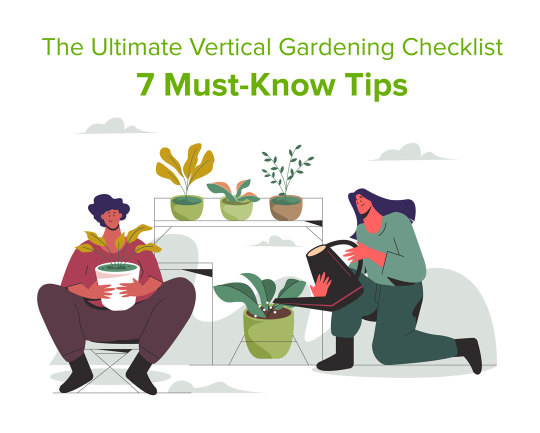
#Vertical gardening#Vertical garden presentation#Vertical gardening tips#Vertical garden must know tips#Gardening tips#Urban gardening#Sustainable living#Home gardening#Plant lover#Indoor plants#Outdoor plants#Plant life#Garden inspiration#Gardening#Gardening information#Gardening free resources#Gardening free tips#Gardening free website#Gardening information website#Gardening website
1 note
·
View note
Text
I’ve teased it. You’ve waited. I’ve procrastinated. You’ve probably forgotten all about it.
But now, finally, I’m here with my solarpunk resources masterpost!
YouTube Channels:
Andrewism
The Solarpunk Scene
Solarpunk Life
Solarpunk Station
Our Changing Climate
Podcasts:
The Joy Report
How To Save A Planet
Demand Utopia
Solarpunk Presents
Outrage and Optimisim
From What If To What Next
Solarpunk Now
Idealistically
The Extinction Rebellion Podcast
The Landworkers' Radio
Wilder
What Could Possibly Go Right?
Frontiers of Commoning
The War on Cars
The Rewild Podcast
Solacene
Imagining Tomorrow
Books (Fiction):
Ursula K. Le Guin: The Left Hand of Darkness The Dispossessed The Word for World is Forest
Becky Chambers: A Psalm for the Wild-Built A Prayer for the Crown-Shy
Phoebe Wagner: When We Hold Each Other Up
Phoebe Wagner, Bronte Christopher Wieland: Sunvault: Stories of Solarpunk and Eco-Speculation
Brenda J. Pierson: Wings of Renewal: A Solarpunk Dragon Anthology
Gerson Lodi-Ribeiro: Solarpunk: Ecological and Fantastical Stories in a Sustainable World
Justine Norton-Kertson: Bioluminescent: A Lunarpunk Anthology
Sim Kern: The Free People’s Village
Ruthanna Emrys: A Half-Built Garden
Sarina Ulibarri: Glass & Gardens
Books (Non-fiction):
Murray Bookchin: The Ecology of Freedom
George Monbiot: Feral
Miles Olson: Unlearn, Rewild
Mark Shepard: Restoration Agriculture
Kristin Ohlson: The Soil Will Save Us
Rowan Hooper: How To Spend A Trillion Dollars
Anna Lowenhaupt Tsing: The Mushroom At The End of The World
Kimberly Nicholas: Under The Sky We Make
Robin Wall Kimmerer: Braiding Sweetgrass
David Miller: Solved
Ayana Johnson, Katharine Wilkinson: All We Can Save
Jonathan Safran Foer: We Are The Weather
Colin Tudge: Six Steps Back To The Land
Edward Wilson: Half-Earth
Natalie Fee: How To Save The World For Free
Kaden Hogan: Humans of Climate Change
Rebecca Huntley: How To Talk About Climate Change In A Way That Makes A Difference
Christiana Figueres, Tom Rivett-Carnac: The Future We Choose
Jonathon Porritt: Hope In Hell
Paul Hawken: Regeneration
Mark Maslin: How To Save Our Planet
Katherine Hayhoe: Saving Us
Jimmy Dunson: Building Power While The Lights Are Out
Paul Raekstad, Sofa Saio Gradin: Prefigurative Politics
Andreas Malm: How To Blow Up A Pipeline
Phoebe Wagner, Bronte Christopher Wieland: Almanac For The Anthropocene
Chris Turner: How To Be A Climate Optimist
William MacAskill: What We Owe To The Future
Mikaela Loach: It's Not That Radical
Miles Richardson: Reconnection
David Harvey: Spaces of Hope Rebel Cities
Eric Holthaus: The Future Earth
Zahra Biabani: Climate Optimism
David Ehrenfeld: Becoming Good Ancestors
Stephen Gliessman: Agroecology
Chris Carlsson: Nowtopia
Jon Alexander: Citizens
Leah Thomas: The Intersectional Environmentalist
Greta Thunberg: The Climate Book
Jen Bendell, Rupert Read: Deep Adaptation
Seth Godin: The Carbon Almanac
Jane Goodall: The Book of Hope
Vandana Shiva: Agroecology and Regenerative Agriculture
Amitav Ghosh: The Great Derangement
Minouche Shafik: What We Owe To Each Other
Dieter Helm: Net Zero
Chris Goodall: What We Need To Do Now
Aldo Leopold: A Sand County Almanac
Jeffrey Jerome Cohen, Stephanie Foote: The Cambridge Companion To The Environmental Humanities
Bella Lack: The Children of The Anthropocene
Hannah Ritchie: Not The End of The World
Chris Turner: How To Be A Climate Optimist
Kim Stanley Robinson: Ministry For The Future
Fiona Mathews, Tim Kendall: Black Ops & Beaver Bombing
Jeff Goodell: The Water Will Come
Lynne Jones: Sorry For The Inconvenience But This Is An Emergency
Helen Crist: Abundant Earth
Sam Bentley: Good News, Planet Earth!
Timothy Beal: When Time Is Short
Andrew Boyd: I Want A Better Catastrophe
Kristen R. Ghodsee: Everyday Utopia
Elizabeth Cripps: What Climate Justice Means & Why We Should Care
Kylie Flanagan: Climate Resilience
Chris Johnstone, Joanna Macy: Active Hope
Mark Engler: This is an Uprising
Anne Therese Gennari: The Climate Optimist Handbook
Magazines:
Solarpunk Magazine
Positive News
Resurgence & Ecologist
Ethical Consumer
Films (Fiction):
How To Blow Up A Pipeline
The End We Start From
Woman At War
Black Panther
Star Trek
Tomorrowland
Films (Documentary):
2040: How We Can Save The Planet
The People vs Big Oil
Wild Isles
The Boy Who Harnessed The Wind
Generation Green New Deal
Planet Earth III
Video Games:
Terra Nil
Animal Crossing
Gilded Shadows
Anno 2070
Stardew Valley
RPGs:
Solarpunk Futures
Perfect Storm
Advocacy Groups:
A22 Network
Extinction Rebellion
Greenpeace
Friends of The Earth
Green New Deal Rising
Apps:
Ethy
Sojo
BackMarket
Depop
Vinted
Olio
Buy Nothing
Too Good To Go
Websites:
European Co-housing
UK Co-housing
US Co-housing
Brought By Bike (connects you with zero-carbon delivery goods)
ClimateBase (find a sustainable career)
Environmentjob (ditto)
Businesses (🤢):
Ethical Superstore
Hodmedods
Fairtransport/Sail Cargo Alliance
Let me know if you think there’s anything I’ve missed!
#solarpunk#hopepunk#cottagepunk#environmentalism#social justice#community#optimism#bright future#climate justice#tidalpunk#turbinepunk#resources#masterpost#books#films#magazines#podcasts#apps
1K notes
·
View notes
Text
So You Want to be Solarpunk?
If your neighborhood has a vacant lot, get some neighbors together and turn it into a community garden.
Organize a block party.
Create a maker space enabling folks to repair, repurpose, and swap their old stuff.
Organize a bunch of plant-savvy neighbors to help folks convert their yards from resource hungry yuppie lawns into something sustainable that fits the local biome.
Get a few friends together and clean up the trash on the streets. Make sure to recycle.
Set up Little Free Libraries and Little Free Pantries.
Get tool-savvy neighbors together to help folks with needed household repairs and upgrades.
The punk in solarpunk is about resistance to the alienation and consumer culture that makes our communities unsustainable and our environments toxic.
1K notes
·
View notes
Text
"Next Monday [6/17/24] is the start of National Pollinator Awareness Week, and one Colorado advocacy group is hosting a flower planting drive to rewild Colorado’s meadows, gardens, and just maybe, its children too.
Created by constitutional amendment in 1992, Great Outdoors Colorado (GOCO) is a state-funded independent board that invests a portion of Colorado Lottery proceeds to help preserve and enhance the state’s parks, trails, wildlife, rivers, and open spaces.
This year, GOCO’s offshoot Generation Wild is distributing over 100,000 free packets of wildflower seeds to collection points at museums, Denver Parks and Rec. offices, and libraries all over the state to encourage kids and families to plant the seeds in their backyards.
The Save the Bees! initiative aims to make the state more beautiful, more ecologically diverse, and more friendly to pollinators.
According to a new report from the Colorado Department of Natural Resources, 20% of Colorado’s bumblebees are now at risk of extinction. Even in a small area like a backyard, planting wildflowers can make a positive impact on the local ecosystem and provide native bees with a healthy place to live.
“The Western Bumblebee population has declined in Colorado by 72%, and we’re calling on kids across Colorado to ‘bee’ the change,” said GOCO Executive Director Jackie Miller.
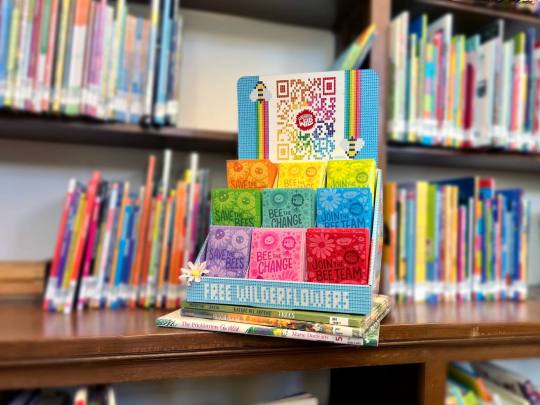
Named after Generation Wild’s official mascot “Wilder,” the Wilderflower Seed Mix was developed in partnership with Applewood Seed Co. and packets are now available for pickup at designated partner sites including more than 80 Little Free Library boxes.
By distributing 100,000 Wilderflower packets, Generation Wild is providing more than 56 million seeds for planting in every nook and cranny of the state. All seeds are regionally-native to Colorado, which is important for sustaining the living landscape of bees, birds, and other animals.
Additionally, by using flower species adapted to the Mile High climate, landscapers and gardeners need to use less water than if they were tending non-native plants.
“Applewood Seed Co. was excited to jump in and help Generation Wild identify a seed mix that is native to the Colorado region and the American West, containing a diversity of flower species to attract and support Colorado’s pollinator populations,” stated Norm Poppe, CEO of Applewood Seed Co. “We hope efforts like this continue to educate the public on pollinator conservation and the need to protect our native bees and butterflies.”
Concluding her statement Miller firmly stated that children grow up better outside, and if you or a parent you know agree with her, all the information on how to participate in Save the Bees! can be found here on their website, including a map showing all the local pickup points for the Wilderflower Seed Packets."
-via Good News Network, June 13, 2024
#wildflowers#wild flowers#colorado#bees#native bees#entomology#insects#save the bees#pollinators#bumblebees#bumble bee#i love bees#biodiversity#native plants#urban gardening#gardening#ecology#conservation#endangered species#wildlife conservation#enviromentalism#good news#hope#hope posting#solarpunk#denver#boulder colorado#colorado springs#libraries#public libraries
474 notes
·
View notes
Text
Spring Equinox Masterpost- Spoonie Witch Friendly

Art Credit: Anastasia Catris
The Spring Equinox, also called the Vernal Equinox or Ostara, is usually celebrated between the 21st of March in the Northern Hemisphere (In the Southern Hemisphere around September 20th or 21st)
In 2024, Ostara and the Spring Equinox land in the Northern Hemisphere on Monday, March 19th.
The Spring Equinox celebrates the arrival of spring. Celebrating balance, growth, and new beginnings as Winter has finally ended.
Spring Equinox Correspondances
Colours
Light Green
Lavender
Sunny Yellow
Light Blue
Pastel Pink
White
Herbal
Lemongrass
Daffodils
Tulips
Violets
Apple Tree
Cherry Blossom
Primrose
Birch tree
Hyacinths
Dandelion
Garlic
Ash tree
Jasmine
Edibles
Honey
Salad greens
Spring veggies
Fresh berries
Mead
Herbs
Eggs
Seeds
Bread
Edible flowers
Quiches
Custards
Maple
Animals
Hares
Baby Chicks
Snakes
Robins
Bees
Butterflies
Phoenix
Ram
Crystals
Fluorite
Moonstone
Silver
Aquamarine
Clear Quartz
Amazonite
Symbols
Bonfires
Flowers
Rabbits
Eggs
Seeds
Baskets
Flowering or Tree Buds
Lambs
Birds
Spiritual meanings
Purification
Cleansing (removal of stagnant energy)
Growth
Transition
Motivation
Balance
Birth
Good fortune
Kindness
Joy
Fertility
Scents
Coconut
Citrus
Floral scents (rose, lilac, jasmine, etc)
Herbal scents (rosemary, basil, mint, etc)
Gods / Goddesses / Spirits
Eostre – (Anglo-Saxon)
Aphrodite - (Greek)
Gaia - (Celtic)
Gaea - (Greek)
Venus - (Roman)
Athena - (Greek)
Aurora - (Roman)
Eos - (Greek)
Isis – (Egyptian)
Freya - (Norse)
Persephone - (greek)
Cybele - (Roman)
The Green Man - (Celtic)
Odin – (Norse)
Osiris – (Egyptian)
Pan – (Greek)
Thoth – (Egyptian)
Adonis – (Greek)
Apollon – (Greek)
Apollo - (Roman)
Need some suggestions to celebrate? I've got you covered.
High energy celebrations and ritual
Deep cleaning of the hearth and home
Nature hikes
Visiting farmers markets
Making preserves
Create a fae garden
Create a seasonal altar
Abundance/Prosperity ritual
New beginnings ritual
Low energy celebrations
Wear pastels
Create flower crowns
Light a candle with scent correspondence
No spoon celebrations
Opening a window
Journaling Prompts
Keeping hydrated
Drink floral tea
Rest
How you celebrate the holiday does not matter. You can choose to do any activity that feels right. These are only suggestions and remember that you're enough no matter what.
Also please note some stuff is UPG. A great book is Year of the Witch by Temperance Alden for honouring the celebrations and if you wanted to work more seasonally. It's not Wiccan-based and has plenty of resources for every witch.
Feel free to post how you celebrate in the comments or reblogs!
Want to see more of my posts? Check out my Wheel of the Year Masterpost or my Main Masterpost.
#witchcraft#witch#electic witch#witchblr#paganism#spoonie witch#spoonie magic#ostara#wheel of the year#witchy#spring equinox#seasonal magic#ostara masterpost#ostara correspondences#spring equinox masterpost#spring equinox correspondances#spoonie#chronic illness magic#chronic illness
995 notes
·
View notes
Note
When will humankind learn the lesson of its hubris and begin to heal itself? Also can you recommend any undergraduate or graduate level resources (textbooks etc.) for learning about fiction? I already read Writing Fiction by Burroway. Thanks in advance
January 14, 3182. Make a note of the date and return to this post when it comes.
To your second question, I've never read anything on writing fiction, only writing in general. I've found something valuable in every book on writing, even if there were things in the book I found less valuable. For example, I read Writing Down the Bones: Freeing the Writer Within by Natalie Goldberg, and while there was much of it I didn't care for, there are some passags that have stuck with me 22 years later. When it comes to writing guides, I think the best thing to do is read what interests you while understand that what you are really doing is building your own writing guide inside you. You're absorbing what you find personally meaningful and using it to create your own personal styleguide that, like it or not, you'll be following for the rest of your life. Rather than rejecting that, and trying to decide which text will be the text that tells you how to write, embrace it, realize that you are going to do what you're going to do, and then try to work within that framework. That is, if that's what's happening, how will you approach a styleguide? What will it mean to you to read a very didactic text (i.e. "All serious writers must do x; no serious writer every does y") vs. a loosey-goosey one (e.g. "Dance naked in the garden of your creativity and allow your flowers to bloom!")? What are you looking for in these texts and what will you do with information or strategies that you find valuable?
Returning to Writing Down the Bones, I have to say I found the book to be mostly woo. It was more a kind of self-help/empowerment book than a book on writing, in my opinion. But there is something in there that I'm sure I'd heard before but which finally resonated with me. Specifically, it was the way she articulated that it really, truly doesn't matter what you put on the page when you're drafting. Drafting is not the time to reject. Even some idea comes to you that you find absurd, illogical, thematically inappropriate—whatever. It's not the time to push it away. Indeed, it's wasted effort. Editing and revising is the time to question. If you're writing, you shouldn't let anything stop you—even your own brain.
Why it took till then for this idea to take root, I don't know. It could be how she worded it. It could be that it came at the right time. Perhaps I was more open to new ideas when I was reading this book. It may also have something to do with a transition that had taken place for me in writing. After all, when I started high school, I was not regularly using a computer (we'd only just gotten a computer that stayed at home). When I started writing, I wrote by hand—on paper. It's a much, much different thing to edit and revise when you're writing on paper than it is on when you're working on a computer! I mean, digital real estate is cheap. When you're writing by hand, it can literally hurt to write seven or eight pages—and then to discard them in editing! Right now I'm working on a novel draft where I've decided an entire section needs to come out. If I'd written that by hand?! I can't even imagine.
I guess the tl;dr of it is I don't have a specific text to recommend. Rather, I encourage you to look around and grab anything that interests you. In doing so, though, I encourage you to approach it differently, focusing on what in it you find valuable, without either wholly rejecting it or feeling you have to follow it to the letter like an Ikea manual. I even found something valuable in C. S. Lewis's The Abolition of Man, which I honestly can't believe I read.
If you'd like some fiction advice that may be generally useful no matter what you're writing, this is what I can offer:
A valuable skill to hone is being able to read your work as if you have no other knowledge of it. In other words, you need to be able to read your work like a reader. One of the most difficult things to do with fiction is to cut. You usually have a lot more characterization, a lot more plot points, a lot more detail, etc. than end up on the page. The important question is if you cut something, will the reader notice? Will it actually feel like something's miss it, or will a reader never notice? Mind, I'm not saying that as a writer you can't tell if something is superfluous, or that anything you cut will be superfluous. I'm saying sometimes even if you cut something important a reader will still get the impression that what they are reading is whole and unedited. That isn't a good thing or a bad thing: it's a neutral thing. The question you'll have to answer is what is this whole that the reader is getting, and is that whole something you're satisfied with?
Get multiple rounds of feedback from many different readers. I say this not because it's vital, because beta readers are important, because you have to have multiple perspectives on your work, etc. None of that. Getting feedback from many different readers is a form of self-care on the part of the writer. I was deathly afraid of feedback as a young writer. I welcomed praise, sure, but anything else felt too painful to bear. This changed when I took a short fiction class at Berkeley. Suddenly a short story of mine wasn't getting one round of feedback: it was getting fourteen. And not just from the professor, but from fellow students. This was a minor revolution for me in terms of accepting feedback. If I were to take, say, one round of feedback, certainly there would be some praise, but there would also be notes like "awkward phrasing", "why did x character do y?", "this is unclear", "too much description", etc. These things would burn me. I would seethe reading them, and it would hurt so deeply. But! Imagine that one of them circles a paragraph and writes "too much description" and then the other thirteen readers say absolutely nothing at all about that paragraph—maybe one even puts a smiley face next to it. THAT puts the criticism in its proper context. Maybe your writing isn't too bad! Maybe there isn't too much description. Maybe that particular reader just wasn't vibing with it, and maybe that's okay. And then let's look at it from the other perspective. Say thirteen out of fourteen papers have a sentence marked and all of them say things like "huh?", "what's this mean?", "confusing", etc. Guess what? The sentence is probably confusing. And for some reason if everyone's saying the same thing it hurts a lot less. It means, yeah, you probably made a little mistake, and that's okay. It's not one person singling you out, and it's not the case that they don't know what they're talking about. I can't emphasize enough how freeing it is to look at reviews of your work if you have a handful or more to draw from rather than just a single good friend.
It's okay to write the fun part first. You may have a plot device you're really excited about, but to get there, you have to introduce your characters, have them get together, have them go to a place, meet someone else, etc. And it may take time and energy to write all that. You may feel pressured to get through that before you get to the part you really want to write. You certainly can, but you do not have to. I don't know if younger writers can appreciate exactly what it means to have a computer. You can write a little bit now and literally copy and paste it into some other document later. Try doing that with a typewriter! You can write something like "Insert paragraphs later of characters traveling to x location". You can even drop a variable in there so it's easy to find with the search function later (e.g. "ZZZZZ insert scene description here"—now you just need to search for "ZZZZZ"). You can put it in a different color on the screen so it's easy to find when scrolling. You can paste a freaking photo into your document! It's extraordinary what you can do with a computer that you couldn't do in years past. You've got a ton of options. But most importanly, when your work is done, no one will know what order you wrote it in.
In fiction, nothing has to happen. Villains don't have to be punished; heroes don't have to win; characters don't have to have a specific arc that comes to some conclusion. Honestly, one of the tropes (if you can even call it a trope) that I find most frustrating in sequels for movie franchises is after the characters are introduced, they take a few character and assign to them the major story conflict, and then for the rest, they give them a mini arc. It's like, "Mondo 2: Exploding the Mondoverse sees our hero Larjo Biggins take on new villain the Krunge as the very core of the Mondoverse is threatened with destruction! Also, Siddles Nuli learns its okay to be left out sometimes and she shouldn't get her feelings hurt, and Old Mucko learns that even though technology is advancing, sometimes good old fashioned common sense is just what the doctor ordered!" If you get to the end of your story, and you feel it's done, you don't have to panic if you suddenly realize we don't know whether Hupsi ever made it to Bumbus 7. It's okay if Story A is resolved but Story B is not.
I don't care if you used Trope A in your new story even though you used Trope A in your past seven stories and neither should you. Seriously, you think anyone was complaining when Agatha Christie put out another mystery novel? "Oh. Mystery again, huh? Gee, we were all hoping you'd write a book about the struggles traditional fishing villages are facing in the wake of industrial modernization." No we fucking weren't!
I hope you find some of this useful. Whether you did or not, though, be sure you enjoy what you're doing. If you are, you're doing the right thing.
#writing#fiction#agatha christie#c s lewis#natalie goldberg#mcu#seriously#the end of hubris and the beginning of healing#mark your calendars
241 notes
·
View notes